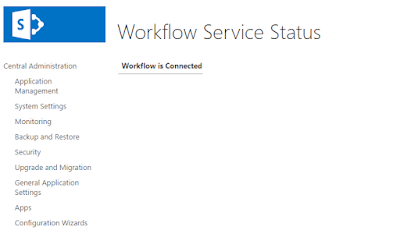SharePoint provider-hosted add-ins includes components that
are deployed and hosted outside the SharePoint farm. They are installed to the
host web, but their remote components are hosted on another server.
SharePoint-hosted add-ins has a fixed hosting pattern, since
they are hosted on the add-in web. Provider-hosted add-ins provides more
flexibility for hosting the various components of your add-in, so if you choose
to create one, you’ll need to match your goals and requirements to the
appropriate hosting pattern. One of the most important questions you need to
ask when considering provider-hosted add-ins and how you’ll build them is how
the add-in will get authorization to interact with SharePoint.
Provider-hosted add-ins gives you two choices:
- JavaScript cross-domain library
- OAuth
1. JavaScript cross-domain library:
The cross-domain library lets you interact with more than
one domain from the remote components of your add-in through a proxy. If
client-side code and the permissions of a user who is signed in to SharePoint
are sufficient, the cross-domain library is a good option. The cross-domain
library is also convenient whenever you are making remote calls through a
firewall.
2. OAuth:
OAuth is an open protocol that enables secure authorization
from client applications (desktop, web, and mobile applications) in an easily
manageable way. If you plan to build a SharePoint Add-in that runs in a remote
web application and communicates back to SharePoint 2013, you will often need
to use OAuth. OAuth is required whenever you are calling into SharePoint from a
remotely hosted web application that can’t use client-side code (HTML +
JavaScript) exclusively.
If you are using Provider-hosted add-in with Azure (Cloud)
web deployment and Office 365 then you need Microsoft Azure Access Control
Service (ACS) as the trust broker between Azure (Cloud) Web and Office 365
SharePoint site to make it authorize. But if you are deploying add-in in
On-premises SharePoint 2013 site then it needs Server certificates along with
ACS to enable High-Trust between add-in and SharePoint. These certificates will
be installed on SharePoint on-premises server to enables trust between add-in
and SharePoint.
The following table lists all of the possible patterns for
hosting both the SharePoint components and the remote components of your
add-in, along with the trust brokers that are available to you if you’re using
OAuth:
SharePoint component
location
|
Remote component location
|
Trust broker
|
On premises
|
In cloud
|
ACS, certificate
|
On premises
|
On premises
|
ACS, certificate
|
Office 365
SharePoint site
|
In cloud
|
ACS
|
Office 365
SharePoint site
|
On premises
|
ACS
|



